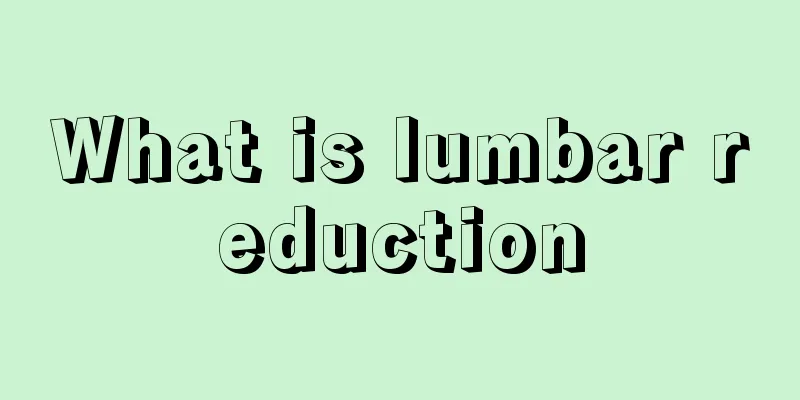Causes of early osteosarcoma

|
Many osteosarcoma patients feel very strange. At the beginning, they did not feel any discomfort in their bodies and were not hit by anything. How could they suffer from osteosarcoma inexplicably? In fact, osteosarcoma does not occur for no reason. It has certain causes. Let me show you what are the causes of early osteosarcoma? The clinical causes of osteosarcoma are analyzed as follows: 1. Causes Modern medicine has not yet fully understood the cause of this disease. Some people point out that radioactive isotope radium and traumatic stimulation are inducing factors. Lesions that occur in long bones are mostly located in the epiphysis, and a few are in the middle of the shaft. The tumor develops rapidly along the medullary cavity, spreading to the epiphysis on the one hand. On the other hand, the tumor occasionally spreads to the shaft. In addition, the tumor also develops rapidly outward, invading the Hastelloy system in the bone cortex, causing vascular nutrition disorders, and the bone cortex is then destroyed. The tumor quickly reaches the periosteum and invades the adjacent muscle tissue outward. In addition, it is related to heredity, exposure to radioactive substances, viral infection, etc. It can also be secondary to osteitis deformans and fibrous dysplasia of bone. Some cases are caused by the malignant transformation of other benign tumors. Pathogenesis The pathogenesis of this disease is still unclear. Its histological feature is that the proliferating spindle-shaped tumor cells directly produce osteoid matrix or immature bone. However, its histological features are different depending on the type of disease. This article has been described in the overview. Osteosarcoma originates from primitive progenitor cells, which have multipotential characteristics and can differentiate into bone, cartilage and fiber. Therefore, in addition to malignant osteoblasts, osteosarcoma also has chondroblasts and fibroblasts. According to the amount of these three cell components, central osteosarcoma can be divided into osteoblasts (osteoblasts), chondroblasts (cartilage) and fibroblasts (fibroblasts). 1. What the naked eye sees The tumor occurs in the medullary cavity and expands, destroys and penetrates the bone cortex into the soft tissue. The shape of the tumor varies depending on the location of the tumor. The color and texture of the tumor section may vary depending on the cell composition. The tumor may be grayish white, soft, fish-like, bluish white, brittle, cartilage-like, grayish white, tough, rubber-like and ivory-like. The necrotic and hemorrhagic areas are grayish yellow and reddish brown distributed between the tumors. The bone cortex that was penetrated by the tumor on one side did not expand, and the periosteum was lifted up to reveal a triangular periosteal reaction. 2. What we see with a microscope The tumor cells are spindle-shaped, polygonal, or round, with obvious intercellular changes. The cells are of different sizes and shapes. The nuclei are large and the nucleoli are obvious. Pathological nuclear division is common. In well-differentiated areas, tumor cells can be seen directly forming neoplastic bone and bone-like tissue, which are pink-stained homogeneous cords and small flakes. The more mature the tumor is, the more bone and bone-like tissue it forms. Osteoclast-type giant cells and areas of hemorrhage and necrosis can sometimes be seen. (1) Osteoblastic type: It is mainly composed of malignant osteoblasts with obvious atypia, forming more tumor bone and bone-like tissue. The degree of differentiation of cells varies. Some are more mature, with no obvious atypia, forming more tumor bone, while others are poorly differentiated, with very obvious tumor cell atypia, easy nuclear division, and less tumor bone and bone-like tissue. (2) Chondroblastic type: In addition to osteoblasts, half of the tumor tissue is chondrosarcoma structure. At the same time, tumor cells can be seen directly forming neoplastic bone and bone-like tissue. (3) Fibroblastic type: The tumor cells are spindle-shaped and arranged in a spoke-like pattern, among which tumor cells can be seen directly forming neoplastic bone and bone-like tissue. The above three types often exist in mixture, and are currently called traditional types. 3. Electron microscopy observation It is composed of five types of cells, the most basic of which is malignant osteoblasts, followed by chondroblasts, fibroblasts, myofibroblasts and undifferentiated cells. In addition to the five types of cells, there is also tumorous bone-like tissue. (1) Malignant osteoblasts: The nucleus is irregularly round or oval. The nuclear membrane is serrated. The nuclear chromatin is slightly condensed, the nucleolus is obvious, the cell is filled with rough endoplasmic reticulum, there are few mitochondria, a small amount of cristae, the Golgi complex is relatively developed, there are protrusions on the cell surface, and there are no cell connectors between cells. (2) Malignant chondroblasts: The nucleus has obvious anaplasia, irregular microvilli on the surface, a clear zone around the cell, well-developed rough endoplasmic reticulum in the cytoplasm, oval mitochondria with obvious cristae, well-developed Golgi complex, vacuoles in the cytoplasm, and occasional lysosomes. (3) Malignant fibroblasts: The cells are spindle-shaped, with irregular cytoplasm, long oval nuclei, depressions on the nuclear membrane surface, marginal chromatin, abundant rough endoplasmic reticulum in the cytoplasm, and moderate amounts of mitochondria. (4) Undifferentiated cells: These cells have a relatively high nuclear-to-cytoplasmic ratio and few organelles, and are the main cellular components of osteosarcoma. (5) Myofibroblasts: Myofibroblasts can be seen in most osteosarcomas. They are spindle-shaped, have abundant cytoplasmic microfilaments, and have abundant rough endoplasmic reticulum in the cytoplasm. The tumorous bone-like tissue is composed of collagen fibers and proteoglycans, and has different manifestations in different areas of the tumor. In the osteogenic area, the bone-like matrix is dominant. In the chondroblast area, collagen fibers are formed and there are a large number of proteoglycans. In this fibroblast area, there is no obvious osteogenesis of the fibrocytes. |
<<: Is osteosarcoma hereditary?
>>: How long does it take to take medicine for osteosarcoma
Recommend
What to do if sore throat recurs
As soon as autumn comes, my throat starts to hurt...
How long after giving birth can you have sex? What should you pay attention to?
Generally speaking, it takes about a month for a ...
Earlobe becomes red, swollen and thickened after ear piercing
Girls all love beauty. When they see others weari...
Advantages and disadvantages of intramedullary nail fixation of fractures
Since many people do not pay attention to protect...
What tests are needed for colorectal tumors in the elderly?
Colorectal cancer is a very serious tumor disease...
What should I do if I get liver cancer and feel hungry?
As a malignant tumor of the digestive system, liv...
Can sweat steaming detoxify the face?
In recent years, more and more women have begun t...
Side effects of radiotherapy for lymphoma
Radiotherapy is one of the commonly used adjuvant...
What are the symptoms of liver mass?
In fact, liver mass is a noun for an image. Liver...
What are the main principles of combined therapy?
Medicine is relatively developed now, and many di...
ADHD Medications
ADHD is a disease that is caused by local limitat...
Which is better for the knee joint, hot compress or cold compress
Joint pain and swelling all need to be resolved t...
No chin makeup
Nowadays, people are popular with this facial sha...
What are the local symptoms of lung cancer? Will bullae turn into lung cancer?
Lung cancer is an internal medicine disease that ...
What are some tips for treating onychomycosis?
Onychomycosis, also known as onychomycosis, is a ...









